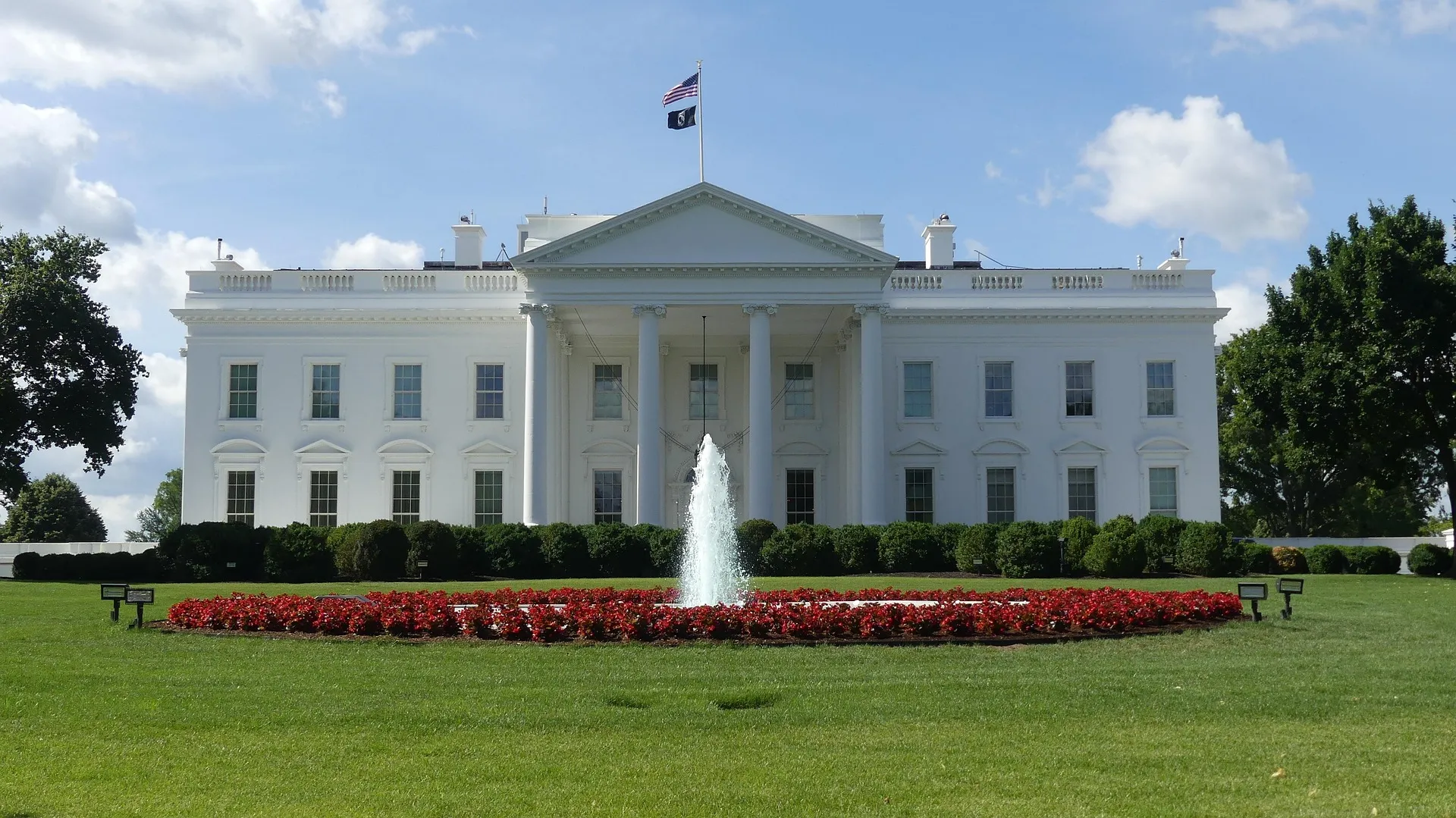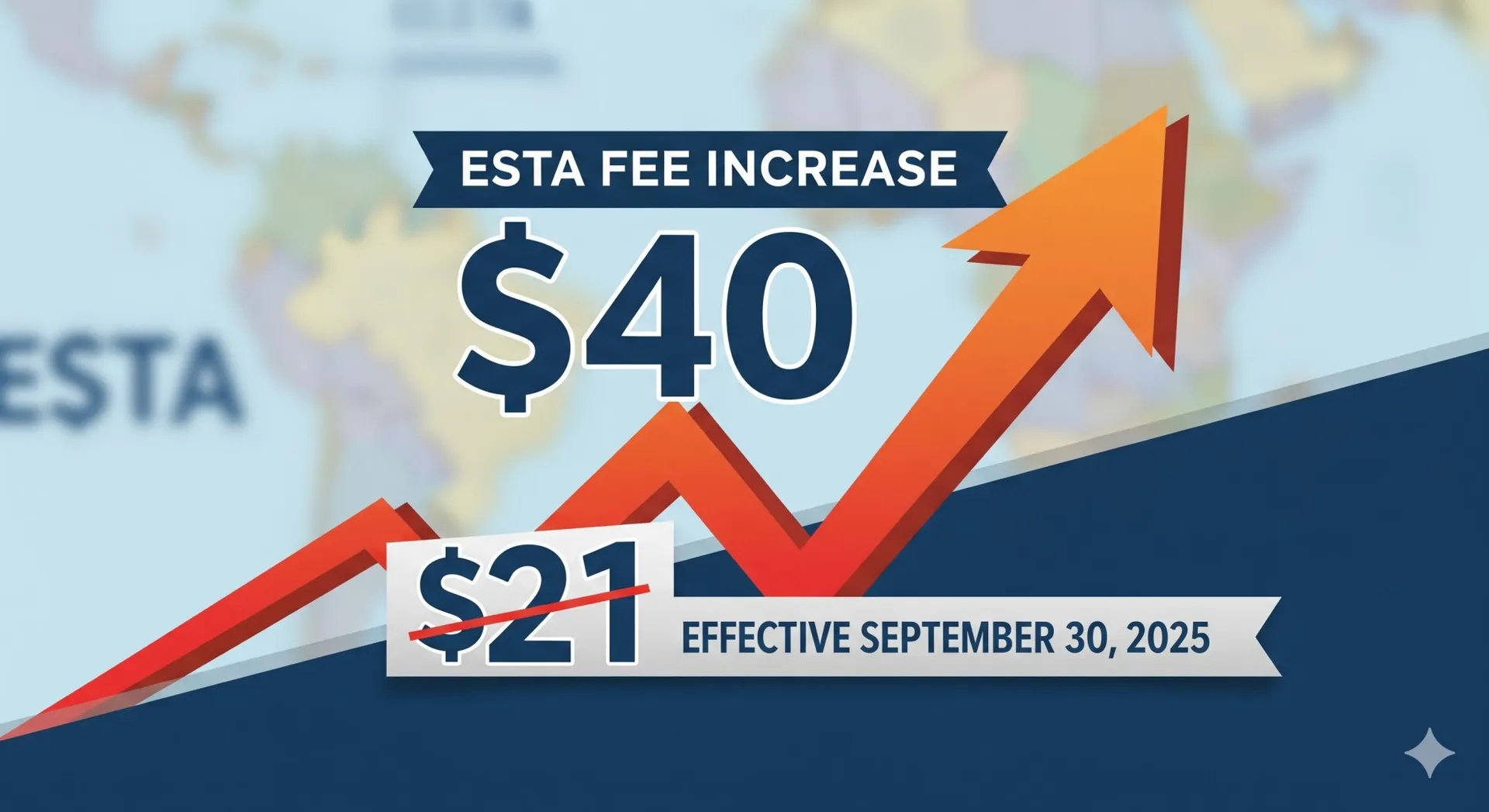




united states visa for czech
Select Visa Type
90 Days multiple Entry
US ESTA
multiple Entry
Validity 730 Days
Stay 90 Days
Get on
7 Sep 2025
united states Visa Requirements
Photo
Passport
How united states Visa Process Works
Step 1: Apply with Visa Centre Au
fill details & upload required documents via Visa Centre Au.
Step 2: Documents Verification
Your documents will Verified by our advisor. We will contact you if any further information required.
Step 3: Your Visa Gets Processed
eVisa Process
- We will submit your documents to the immigration department.
Embassy visa Process
- visa advisor will be assigned to your Application and assist with your Application and appointment booking.
- Attend visa appointment.
- Submit visa appointment to the immigration.
Step 4: Get Your Approved Visa on
You will receive an email notification of your visa approval and you can download from your Visa Centre Au account.
Reviews & Ratings
4.5/5
Based on 19 reviews
5
100%
4
0%
3
0%
2
0%
1
0%
On Time
Easy
Fast
Reliable
TrustWorthy
Cherrice Blizzard
australia
Immigration site had crashed
I had read on FB that the immigration site had crashed and there were continual issues when i wanted to do my 60 visa. I contacted Visa Centre Au and they processed my visa, no stress, no issues, simple process. I was even able to ring them to discuss my concerns. Thank you Visa Centre Au 🙏 😊

Amisha Dahal
australia
Got visa within a week
Got visa within a week. Very helpful. I will definitely recommend to others as well.

Prashansha Karki
australia
Fast and easy service
Fast and easy service, got a visa in couple of hours. Highly recommended!!

Soney S
australia
Reliable and great service
Very satisfied with the customer service provided recently as the visa was granted within a week. Highly recommended visa service centre if you looking for a professional, trustworthy, reliable, and responsive provider, who helps with your processing overall and clears all your queries with quick responses and great support👍Thankful to Mr Prem, you have been a great help.

Sujan Khatri
nepal
Great staff and easy process
Had a great experience with Visa Centre AU, the process was easier and the team was very responsive and giving me update on each part of the application. Love the service.

Sujan Paudel
australia
Thanks so much to Visa centre Au team…
Thanks so much to Visa centre Au team for all the help. Applying visa from them was really easy and they helped me every step of the way guiding me. My overall experience with the team was amazing and i highly recommend working with them.

Sunita Maharjan
nepal
Easily approachable and very reliable.
Easily approachable and very reliable.

Osama Ahmed Khan
pakistan
Very professional
Very professional Applied visa on 19th and received a day after on 21th Well satisfied 🥰🥰
Alina Chauhan
australia
Very helpful and professional team
Very helpful and professional team. Highly recommended.
Madhu Limbu
australia
Friendly and Convenient
Friendly support. All we had to do was provide the pics of our documents. Very convenient

Nishant Shrestha
nepal
Very Professional
Thank u so much visa centre AU for being so much helpful n understanding in every step of our visa process for thailand. I m very much pleased with ur effort and service. I am very much happy from ur service n Il be recommending my friends n family for choosing ur center. Thank u😍😊😊

Hawraa S
australia
I was in a tight situation but with…
I was in a tight situation but with visa centre he made my life easier Best team I've worked with Deserved the 5 stars

Roshani Thapa
australia
I want to thank visa centre Au for…
I want to thank visa centre Au for exceptional performance for solving visa issues . Greatly appreciate what you have done for me . I am grateful for ur valuable advice .most important is thank you for supporting us during crisis situations. Truly grateful for valuable service and emotional support.

kamal maharan
australia
Thank you for making my life easy
Thank you for making my life easy. As promised Bali visa in 2 days. Best in the business. Very much genuine, they are there to help people and make our life easy while traveling...really great service...once again thank you guys so so much.

Sunny Shrestha
australia
Visa granted in 4 days
I recently applied for a Japan visa through the Visa Centre, and I’m very pleased with the experience. The process was smooth, efficient, and professionally handled. My visa was granted without any issues. Highly recommend their service!

Manik Guragain
thailand
I booked a longtail boat to Phi Phi
I booked a longtail boat to Phi Phi Island through Visa Centre AU, and honestly, it was one of the best decisions I made on my trip. The entire experience—from booking to the actual tour—was smooth and hassle-free. The water was crystal clear, the views were straight out of a postcard, and the peaceful ride on the longtail boat made it feel like a private escape to paradise. Big thanks to the team for their quick response and friendly service. They made everything so easy. If you’re planning a trip to Thailand and want something truly special, I highly recommend booking through them. I’ll 100% be reaching out again for my next adventure. Don’t miss this—it’s worth every cent!
united states Visa Rejection Reasons
Factors than can get your visa rejected
Expired Passport
Applying with a passport that has expired or expires within 6 months.
Insufficient Funds
Failing to demonstrate enough financial resources to support your stay.
Criminal Record
Having a criminal history that disqualifies you from obtaining a visa.
Previous Visa Violations
Having overstayed or violated the terms of a previous visa.

U.S.: ESTA fee to increase to $40 starting September 30, 2025
Beginning September 30, 2025, the US Electronic System for Travel Authorisation (ESTA) fee is set to increase from its current $21 to a new rate of $40. This substantial nearly 90% increase is not an isolated policy change but a central component of a sweeping legislative package known as the "One Big Beautiful Bill Act" (H.R.1), which was signed into law on July 4, 2025. This law signals a fundamental shift in US immigration and travel policy, transforming fees on legal, temporary travel into a significant source of government revenue for broader initiatives, including border security and immigration enforcement. This strategic move has sparked fierce criticism from the US travel and tourism industry, with leaders labelling the new fees as a "self-imposed tariff" on the nation's own economy. Industry projections warn of a potential multi-billion dollar loss in visitor spending and a long-term downturn in international tourism. For international travellers and industry professionals, understanding this multifaceted change is critical, particularly as it presents a strategic window of opportunity to secure a two-year travel authorisation at the current, lower rate before the September 30 deadline.
No more low cost: Introducing the $40 ESTA Fee
The Definitive Change: From $21 to $40 on September 30, 2025
On September 30, 2025, a significant change will take place for millions of travellers planning to visit the United States. US Customs and Border Protection (CBP) has confirmed that the fee for the Electronic System for Travel Authorisation (ESTA) will increase from $21 to $40. This new fee will take effect at the start of the new fiscal year for CBP. While some reports cite the effective date as October 1, 2025, this is a minor technical distinction from the September 30 date, as the new rate will apply to any application filed after the close of the current fiscal year. This creates a clear and immediate financial incentive for travellers from Visa Waiver Programme (VWP) countries to complete their ESTA applications before the deadline, as any application submitted prior to September 30 will still be processed at the current $21 rate.
It is important to address a point of confusion that has appeared in some reports, which cite an increase from $4 to $13. This appears to be a misinterpretation of a component of the new fee structure rather than the total cost. The current $21 ESTA fee is composed of two distinct parts: a non-refundable $4 processing fee and a $17 authorisation fee that is only charged upon application approval. A notice published in the Federal Register clarifies that the new fee structure is the sum of three amounts, which include the pre-existing $17 authorisation fee and a new $13 fee, leading to a total of "at least $40". This clarification indicates that sources citing a smaller increase were likely referring to only the new statutory fee component, failing to account for the total, combined charge.
The Legislative Mandate: Deconstructing the "One Big Beautiful Bill Act" (H.R.1)
The fee changes are not arbitrary; they are a direct consequence of federal law H.R.1, officially known as the "One Big Beautiful Bill Act," which was enacted by Congress in early July 2025. This legislation provides the government with the statutory authority to implement these changes. The law also includes provisions for annual adjustments to these fees, based on inflation indexes, beginning in fiscal year 2026. This context is crucial, as it shows that the ESTA fee hike is not an isolated policy decision but a single component of a much broader, legally mandated overhaul of the US immigration and travel financing landscape.
Unpacking the Fee: Understanding the Allocation and Purpose of the Funds
For years, the $17 authorisation portion of the ESTA fee has largely been directed towards funding Brand USA, the official US tourism marketing organisation. The stated purpose of the increased fees in the "One Big Beautiful Bill Act" is to secure the sustainability of tourism promotion. However, a closer examination of the legislation reveals a contradictory provision that plans to drastically cut Brand USA's funding from $100 million to just $20 million annually, even as the fees for its financing are increased. This internal conflict within the same law raises questions about the true purpose of the new fees.
The collected funds are not designated for tourism promotion. Instead, the "One Big Beautiful Bill Act" aims to bolster border security, increase revenue from legal entries, and offset costs associated with managing undocumented immigrants. The ESTA fee has, therefore, been re-purposed from a tourism marketing instrument to a revenue-generating tool for the US Treasury, earmarking funds for broader immigration and border enforcement initiatives as required by law. This analysis suggests that the government is making a clear policy decision to prioritise revenue generation over tourism promotion, a shift that has significant implications for the travel industry.
A Broader Shift in US Immigration Policy
Beyond ESTA: The Full Scope of H.R.1 Fee Increases
The ESTA fee increase is part of a comprehensive overhaul of US immigration and travel fees mandated by H.R.1. The law introduces or increases charges for several other key travel documents, affecting a wide spectrum of legal, temporary visitors. The most significant new charge for non-VWP travellers is the "Visa Integrity Fee" of at least $250, which is to be levied on "any alien issued a nonimmigrant visa" at the time of issuance. This fee is in addition to all existing visa application fees and cannot be waived or reduced. For those arriving at land border ports of entry, the fee for a Form I-94 will increase from $6 to a new total of $30. Lastly, a new $30 fee will be imposed for enrolment in the Electronic Visa Update System (EVUS), the online system used by Chinese B-1/B-2 visa holders.
When examined collectively, these changes reveal a deliberate, systemic strategy to increase government revenue from nearly all forms of legal entry into the United States. As the US travel and tourism industry has noted, this collection of fees and charges acts as a "self-imposed tariff" on international travel spending. By taxing its own "export"—the experience of international travel—the government risks making the United States a less attractive and more expensive destination. The policy shift suggests a willingness to accept a potential drop in visitor numbers in exchange for increased revenue from those who do travel. The following table provides a clear overview of the key changes.
| Authorisation Type | Affected Group | Current Fee | New Fee | Increase (%) |
| ESTA | Visa Waiver Programme Travellers | $21 | $40 | ~90% |
| Visa Integrity Fee | Nonimmigrant Visa Applicants | Varies (e.g., $185) | At least $250 (plus existing fees) | N/A (New Fee) |
| I-94 (Land Border) | All Foreign Nationals Entering by Land | $6 | $30 | 400% |
| EVUS Enrolment | Chinese B-1/B-2 Visa Holders | $0 | $30 | N/A (New Fee) |
Expert Guidance for the Savvy Traveller
The Pre-Deadline Rush: Why Acting Now Could Save You Money
For travellers planning a trip to the United States under the Visa Waiver Programme, the impending fee increase presents a strategic financial opportunity. An approved ESTA authorisation is valid for a period of two years from the date of approval or until the passport expires, whichever comes first. Any application submitted before the September 30, 2025 deadline will be charged at the current $21 fee, and the resulting authorisation will be valid for the full two-year period, covering travel until at least late September 2027.
By applying early, a single traveller can save $19. For a family of four, the total savings would be $76, representing a significant reduction in travel costs. This makes a pre-deadline application a sound financial and logistical decision, even for those with no immediate travel plans, as it locks in the lower rate for any potential trips in the next two years.
Understanding the Fine Print: Eligibility Changes and Updated Restrictions
The Visa Waiver Programme is not a static list of countries but a dynamic system that reflects ongoing diplomatic and security considerations. While the programme has expanded with the recent addition of Romania as the 43rd participating country, and with Argentina likely to rejoin, there have also been notable changes to eligibility. The validity of ESTA for citizens of Brunei and Hungary was recently reduced from two years to one. Additionally, travellers who have visited certain countries (e.g., Cuba since January 12, 2021) or are also nationals of specific countries (e.g., Iran, Syria) may be ineligible for the VWP and must apply for a visa.
These changes illustrate the VWP's dual role as a strategic tool for both diplomatic engagement and security management. While the expansion of the programme to new countries can be viewed as a diplomatic overture, the reduced validity for other countries and the tightened restrictions demonstrate an emphasis on security controls. Travellers should not assume their eligibility remains constant and are advised to always verify their status and review the latest regulations before making any travel arrangements.
The Global Context—US ESTA vs. The World
A Comparative Review of Global Travel Authorisation Systems
To understand the new ESTA fee, it is essential to benchmark it against similar electronic travel authorisation systems in other major tourist destinations. These systems all serve the purpose of enhancing security by pre-screening travellers while streamlining the entry process for citizens of visa-exempt countries.
- Canada's eTA: The Canadian Electronic Travel Authorisation costs a mere $7 CAD and is valid for a period of up to five years, allowing for multiple entries.
- The UK's ETA: The United Kingdom's new Electronic Travel Authorisation costs £16 and is valid for two years, allowing the holder to travel to the UK as many times as they wish.
- The EU's ETIAS: The European Union's European Travel Information and Authorisation System (ETIAS), which is expected to become operational in late 2026, will cost €20 and is valid for a period of three years, or until the passport expires. The EU has also proposed an exemption for travellers under 18 or over 70 from paying the fee.
The following table provides a clear comparison of these global fees.
| System Name | Country/Region | New Fee (Local Currency) | Validity Period | Key Notes |
| US ESTA | United States | $40 USD | 2 years | Fee is levied on all applicants. |
| Canada eTA | Canada | $7 CAD | 5 years | One of the most affordable global ETAs. |
| UK ETA | United Kingdom | £16 GBP | 2 years | Valid for multiple visits. |
| EU ETIAS | Schengen Area | €20 EUR | 3 years | Exemptions for those under 18 and over 70. |
The Strategic Implications of Pricing for International Competitiveness
The comparative data reveals that the new US ESTA fee will be significantly more expensive than the fees for similar authorisations in other major global destinations. While the European Union is raising its ETIAS fee to align with global standards, the US, by raising its fee to $40, is now clearly an outlier. This indicates a strategic policy choice to prioritise government revenue over international tourism competitiveness. The US is signalling that it is willing to accept a potential drop in visitor numbers in exchange for increased revenue from those who do choose to travel. The coming years will demonstrate whether this calculated risk will pay off or if the US will find itself at a competitive disadvantage in the global tourism market.
Conclusion: Navigating the Future of US Travel
The impending ESTA fee increase is a key component of a larger policy shift under the "One Big Beautiful Bill Act," which is fundamentally transforming travel fees into a source of government revenue for border security and other national initiatives. This change, along with other new and increased fees, has the potential to negatively impact the US tourism economy by making travel more expensive and potentially deterring international visitors.
The most crucial takeaway for travellers is the strategic opportunity presented by the September 30, 2025 deadline. By applying for an ESTA before this date, a traveller can secure a two-year authorisation at the current $21 price, providing a cost-effective and convenient solution for future trips. The new fees signal a new era for US travel, where the government is prioritising its security and fiscal goals over the concerns of the tourism industry. The coming years will reveal whether this calculated risk results in a long-term decline in international tourism or if travellers will simply absorb the increased costs as a new reality of visiting the United States.

U.S.: ESTA fee to increase to $40 starting September 30, 2025
Beginning September 30, 2025, the US Electronic System for Travel Authorisation (ESTA) fee is set to increase from its current $21 to a new rate of $40. This substantial nearly 90% increase is not an isolated policy change but a central component of a sweeping legislative package known as the "One Big Beautiful Bill Act" (H.R.1), which was signed into law on July 4, 2025. This law signals a fundamental shift in US immigration and travel policy, transforming fees on legal, temporary travel into a significant source of government revenue for broader initiatives, including border security and immigration enforcement. This strategic move has sparked fierce criticism from the US travel and tourism industry, with leaders labelling the new fees as a "self-imposed tariff" on the nation's own economy. Industry projections warn of a potential multi-billion dollar loss in visitor spending and a long-term downturn in international tourism. For international travellers and industry professionals, understanding this multifaceted change is critical, particularly as it presents a strategic window of opportunity to secure a two-year travel authorisation at the current, lower rate before the September 30 deadline.
No more low cost: Introducing the $40 ESTA Fee
The Definitive Change: From $21 to $40 on September 30, 2025
On September 30, 2025, a significant change will take place for millions of travellers planning to visit the United States. US Customs and Border Protection (CBP) has confirmed that the fee for the Electronic System for Travel Authorisation (ESTA) will increase from $21 to $40. This new fee will take effect at the start of the new fiscal year for CBP. While some reports cite the effective date as October 1, 2025, this is a minor technical distinction from the September 30 date, as the new rate will apply to any application filed after the close of the current fiscal year. This creates a clear and immediate financial incentive for travellers from Visa Waiver Programme (VWP) countries to complete their ESTA applications before the deadline, as any application submitted prior to September 30 will still be processed at the current $21 rate.
It is important to address a point of confusion that has appeared in some reports, which cite an increase from $4 to $13. This appears to be a misinterpretation of a component of the new fee structure rather than the total cost. The current $21 ESTA fee is composed of two distinct parts: a non-refundable $4 processing fee and a $17 authorisation fee that is only charged upon application approval. A notice published in the Federal Register clarifies that the new fee structure is the sum of three amounts, which include the pre-existing $17 authorisation fee and a new $13 fee, leading to a total of "at least $40". This clarification indicates that sources citing a smaller increase were likely referring to only the new statutory fee component, failing to account for the total, combined charge.
The Legislative Mandate: Deconstructing the "One Big Beautiful Bill Act" (H.R.1)
The fee changes are not arbitrary; they are a direct consequence of federal law H.R.1, officially known as the "One Big Beautiful Bill Act," which was enacted by Congress in early July 2025. This legislation provides the government with the statutory authority to implement these changes. The law also includes provisions for annual adjustments to these fees, based on inflation indexes, beginning in fiscal year 2026. This context is crucial, as it shows that the ESTA fee hike is not an isolated policy decision but a single component of a much broader, legally mandated overhaul of the US immigration and travel financing landscape.
Unpacking the Fee: Understanding the Allocation and Purpose of the Funds
For years, the $17 authorisation portion of the ESTA fee has largely been directed towards funding Brand USA, the official US tourism marketing organisation. The stated purpose of the increased fees in the "One Big Beautiful Bill Act" is to secure the sustainability of tourism promotion. However, a closer examination of the legislation reveals a contradictory provision that plans to drastically cut Brand USA's funding from $100 million to just $20 million annually, even as the fees for its financing are increased. This internal conflict within the same law raises questions about the true purpose of the new fees.
The collected funds are not designated for tourism promotion. Instead, the "One Big Beautiful Bill Act" aims to bolster border security, increase revenue from legal entries, and offset costs associated with managing undocumented immigrants. The ESTA fee has, therefore, been re-purposed from a tourism marketing instrument to a revenue-generating tool for the US Treasury, earmarking funds for broader immigration and border enforcement initiatives as required by law. This analysis suggests that the government is making a clear policy decision to prioritise revenue generation over tourism promotion, a shift that has significant implications for the travel industry.
A Broader Shift in US Immigration Policy
Beyond ESTA: The Full Scope of H.R.1 Fee Increases
The ESTA fee increase is part of a comprehensive overhaul of US immigration and travel fees mandated by H.R.1. The law introduces or increases charges for several other key travel documents, affecting a wide spectrum of legal, temporary visitors. The most significant new charge for non-VWP travellers is the "Visa Integrity Fee" of at least $250, which is to be levied on "any alien issued a nonimmigrant visa" at the time of issuance. This fee is in addition to all existing visa application fees and cannot be waived or reduced. For those arriving at land border ports of entry, the fee for a Form I-94 will increase from $6 to a new total of $30. Lastly, a new $30 fee will be imposed for enrolment in the Electronic Visa Update System (EVUS), the online system used by Chinese B-1/B-2 visa holders.
When examined collectively, these changes reveal a deliberate, systemic strategy to increase government revenue from nearly all forms of legal entry into the United States. As the US travel and tourism industry has noted, this collection of fees and charges acts as a "self-imposed tariff" on international travel spending. By taxing its own "export"—the experience of international travel—the government risks making the United States a less attractive and more expensive destination. The policy shift suggests a willingness to accept a potential drop in visitor numbers in exchange for increased revenue from those who do travel. The following table provides a clear overview of the key changes.
| Authorisation Type | Affected Group | Current Fee | New Fee | Increase (%) |
| ESTA | Visa Waiver Programme Travellers | $21 | $40 | ~90% |
| Visa Integrity Fee | Nonimmigrant Visa Applicants | Varies (e.g., $185) | At least $250 (plus existing fees) | N/A (New Fee) |
| I-94 (Land Border) | All Foreign Nationals Entering by Land | $6 | $30 | 400% |
| EVUS Enrolment | Chinese B-1/B-2 Visa Holders | $0 | $30 | N/A (New Fee) |
Expert Guidance for the Savvy Traveller
The Pre-Deadline Rush: Why Acting Now Could Save You Money
For travellers planning a trip to the United States under the Visa Waiver Programme, the impending fee increase presents a strategic financial opportunity. An approved ESTA authorisation is valid for a period of two years from the date of approval or until the passport expires, whichever comes first. Any application submitted before the September 30, 2025 deadline will be charged at the current $21 fee, and the resulting authorisation will be valid for the full two-year period, covering travel until at least late September 2027.
By applying early, a single traveller can save $19. For a family of four, the total savings would be $76, representing a significant reduction in travel costs. This makes a pre-deadline application a sound financial and logistical decision, even for those with no immediate travel plans, as it locks in the lower rate for any potential trips in the next two years.
Understanding the Fine Print: Eligibility Changes and Updated Restrictions
The Visa Waiver Programme is not a static list of countries but a dynamic system that reflects ongoing diplomatic and security considerations. While the programme has expanded with the recent addition of Romania as the 43rd participating country, and with Argentina likely to rejoin, there have also been notable changes to eligibility. The validity of ESTA for citizens of Brunei and Hungary was recently reduced from two years to one. Additionally, travellers who have visited certain countries (e.g., Cuba since January 12, 2021) or are also nationals of specific countries (e.g., Iran, Syria) may be ineligible for the VWP and must apply for a visa.
These changes illustrate the VWP's dual role as a strategic tool for both diplomatic engagement and security management. While the expansion of the programme to new countries can be viewed as a diplomatic overture, the reduced validity for other countries and the tightened restrictions demonstrate an emphasis on security controls. Travellers should not assume their eligibility remains constant and are advised to always verify their status and review the latest regulations before making any travel arrangements.
The Global Context—US ESTA vs. The World
A Comparative Review of Global Travel Authorisation Systems
To understand the new ESTA fee, it is essential to benchmark it against similar electronic travel authorisation systems in other major tourist destinations. These systems all serve the purpose of enhancing security by pre-screening travellers while streamlining the entry process for citizens of visa-exempt countries.
- Canada's eTA: The Canadian Electronic Travel Authorisation costs a mere $7 CAD and is valid for a period of up to five years, allowing for multiple entries.
- The UK's ETA: The United Kingdom's new Electronic Travel Authorisation costs £16 and is valid for two years, allowing the holder to travel to the UK as many times as they wish.
- The EU's ETIAS: The European Union's European Travel Information and Authorisation System (ETIAS), which is expected to become operational in late 2026, will cost €20 and is valid for a period of three years, or until the passport expires. The EU has also proposed an exemption for travellers under 18 or over 70 from paying the fee.
The following table provides a clear comparison of these global fees.
| System Name | Country/Region | New Fee (Local Currency) | Validity Period | Key Notes |
| US ESTA | United States | $40 USD | 2 years | Fee is levied on all applicants. |
| Canada eTA | Canada | $7 CAD | 5 years | One of the most affordable global ETAs. |
| UK ETA | United Kingdom | £16 GBP | 2 years | Valid for multiple visits. |
| EU ETIAS | Schengen Area | €20 EUR | 3 years | Exemptions for those under 18 and over 70. |
The Strategic Implications of Pricing for International Competitiveness
The comparative data reveals that the new US ESTA fee will be significantly more expensive than the fees for similar authorisations in other major global destinations. While the European Union is raising its ETIAS fee to align with global standards, the US, by raising its fee to $40, is now clearly an outlier. This indicates a strategic policy choice to prioritise government revenue over international tourism competitiveness. The US is signalling that it is willing to accept a potential drop in visitor numbers in exchange for increased revenue from those who do choose to travel. The coming years will demonstrate whether this calculated risk will pay off or if the US will find itself at a competitive disadvantage in the global tourism market.
Conclusion: Navigating the Future of US Travel
The impending ESTA fee increase is a key component of a larger policy shift under the "One Big Beautiful Bill Act," which is fundamentally transforming travel fees into a source of government revenue for border security and other national initiatives. This change, along with other new and increased fees, has the potential to negatively impact the US tourism economy by making travel more expensive and potentially deterring international visitors.
The most crucial takeaway for travellers is the strategic opportunity presented by the September 30, 2025 deadline. By applying for an ESTA before this date, a traveller can secure a two-year authorisation at the current $21 price, providing a cost-effective and convenient solution for future trips. The new fees signal a new era for US travel, where the government is prioritising its security and fiscal goals over the concerns of the tourism industry. The coming years will reveal whether this calculated risk results in a long-term decline in international tourism or if travellers will simply absorb the increased costs as a new reality of visiting the United States.